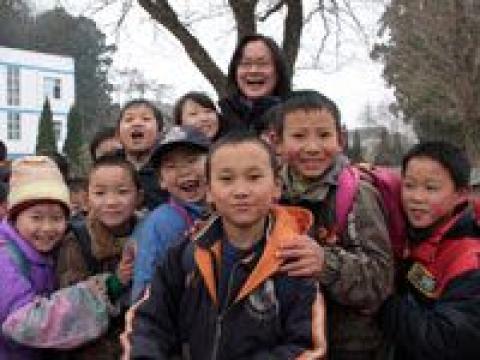China: Healing children's hearts – Sichuan Earthquake two years on

Two years ago when an incredible earthquake rocked China’s Sichuan province, Wong Chingyee was a social worker in Hong Kong. As she watched the shocking scenes of the quake unfold on television something began to stir up in her. She decided to leave Hong Kong, a place she knew well, and move to the quake zone to help with rehabilitation – rehabilitation of children’s hearts.
Today, Chingyee is still working in China with World Vision and reports that the kids are continually getting better and being restored to a sense of normal life. When Chingyee arrived in the Sichuan Province in September of 2008, children were preparing to go back to school for the first time since the quake had halted their formal education.
In the interim, many children had been visiting World Vision’s Child Friendly Spaces, which had been established immediately following the destruction to provide a safe place for children to play and study. A place to play, however, does not solve all problems, Chingyee shared. The quake has also wounded children’s heart. Upon arrival, Chingyee recalls that the need for psychological recovery was huge.
“Especially in Qingchuan County, lots of people had lost their loved ones during the quake and they also feel lost about the future,” she shared. “Every time when we talk about the quake, even the adults could not stop their tears. The only consolation is that children usually have a simpler mind. You would find them easier to recover, given that you can play with them.”
Chingyee thus changed her plan from personal counselling to another effective method of therapy through organising children’s activities at the schools that are being reconstructed. “The quake had once taken away all their hopes. But now they’re able to focus again on something children normally care, like their academic results or going to play,” she said.
Chingyee and her team have designed different activities for children of different ages. For example, smaller children are grouped to learn origami while older students can learn disaster risk reduction knowledge, as well as playing games. “The activities don’t merely give them fun, but also let them learn and grow.”
Chingyee quotes an activity just held for some Primary Five students. The activity let students take photos in their school, which is still under construction, and then they will share how they feel about the new school. “Students may be a bit nervous at the beginning, but then they will gradually open up and actively share with the others. This is good for their development.” The sense of being loved and welcomed has become Chingyee’s drive to keep going.
“I’m really glad that children have received our care. And still I’d like to deliver more.”